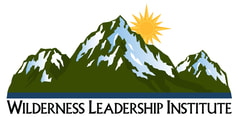Snowpack Summary April 9, 2022
Posted by Allen Giernet @ 6:51am (this summary expires in 24 hours)
This summary applies to backcountry areas only.
The Bottom Line –
Wet snow instability will be probable today on slopes above 30 degrees still holding any significant snow. A lack of overnight freezes for several days will bring softening early especially in sun exposed terrain. Watch for roller balls, pinwheels and snow quickly becoming soft to boot top depth. firm icy conditions will be likely in the early morning and may remain in sheltered areas with moderate winds well into to the day. Assess conditions often and as you travel. Be prepared for variable conditions and large areas of thin or no snow.
Please share your observations with us at the avalanche center Submit Reports page.
Posted by Allen Giernet @ 6:51am (this summary expires in 24 hours)
This summary applies to backcountry areas only.
The Bottom Line –
Wet snow instability will be probable today on slopes above 30 degrees still holding any significant snow. A lack of overnight freezes for several days will bring softening early especially in sun exposed terrain. Watch for roller balls, pinwheels and snow quickly becoming soft to boot top depth. firm icy conditions will be likely in the early morning and may remain in sheltered areas with moderate winds well into to the day. Assess conditions often and as you travel. Be prepared for variable conditions and large areas of thin or no snow.
Please share your observations with us at the avalanche center Submit Reports page.

Loose Wet avalanches are the release of wet unconsolidated snow or slush. These avalanches typically occur within layers of wet snow near the surface of the snowpack, but they may quickly gouge into lower snowpack layers. Like Loose Dry Avalanches, they start at a point and entrain snow as they move downhill, forming a fan-shaped avalanche. Other names for loose-wet avalanches include point-release avalanches or sluffs. Loose Wet avalanches can trigger slab avalanches that break into deeper snow layers.
General Summary
Following several days of unseasonably warm weather and no overnight freezes Wet Loose avalanches will be quite possible in steep terrain where snow still remains. Fast firm surface conditions will be likely early in the morning and can soften quickly as the day warms and sun effects the snow. Watch for roller balls and pinwheels and sinking into previously firm snow to above boot top depth. These are all signs of wet snow instability. Move to lower angle terrain and be mindful of your return path later in the day to avoid crossing steep slopes that may be unstable. With moderate westerly winds forecast through the day some areas may remain firm all day. Expect variable conditions and thin to no coverage in many areas especially at lower elevations. Be aware of what’s below you to minimize your exposure as conditions change. Pay close attention to changing conditions as you travel. Start early and finish early to minimize your exposure to wet snow instability. Bring crampons and ice axe for early morning ascents as most reports have indicated firm conditions in the mornings.
Exercise caution on slopes over 30° as these conditions will exist throughout all mountain ranges. Always exercise caution when entering into winter mountain areas. Bring a Beacon Shovel and Probe and know how to use them. Travel with a partner and make conservative decisions.
Following several days of unseasonably warm weather and no overnight freezes Wet Loose avalanches will be quite possible in steep terrain where snow still remains. Fast firm surface conditions will be likely early in the morning and can soften quickly as the day warms and sun effects the snow. Watch for roller balls and pinwheels and sinking into previously firm snow to above boot top depth. These are all signs of wet snow instability. Move to lower angle terrain and be mindful of your return path later in the day to avoid crossing steep slopes that may be unstable. With moderate westerly winds forecast through the day some areas may remain firm all day. Expect variable conditions and thin to no coverage in many areas especially at lower elevations. Be aware of what’s below you to minimize your exposure as conditions change. Pay close attention to changing conditions as you travel. Start early and finish early to minimize your exposure to wet snow instability. Bring crampons and ice axe for early morning ascents as most reports have indicated firm conditions in the mornings.
Exercise caution on slopes over 30° as these conditions will exist throughout all mountain ranges. Always exercise caution when entering into winter mountain areas. Bring a Beacon Shovel and Probe and know how to use them. Travel with a partner and make conservative decisions.
General Mountain Weather Forecast |
4-9-22
Saturday - Slightly cooler today with morning clouds giving way to clear skies during the day. Moderate to strong Westerly winds are expected through the day.
Sunday - Much cooler than the end of the week has been as a disturbance moves are way. Mostly clear skies with moderate winds that will increase overnight into Monday.
Much colder on Monday into Tuesday. Theres a slight chance of snow and rain showers for Monday night into Tuesday morning. Strong gusty winds are possible Monday through Tuesday. Warmer temperatures slowly return midweek to near seasonal averages.
Saturday - Slightly cooler today with morning clouds giving way to clear skies during the day. Moderate to strong Westerly winds are expected through the day.
Sunday - Much cooler than the end of the week has been as a disturbance moves are way. Mostly clear skies with moderate winds that will increase overnight into Monday.
Much colder on Monday into Tuesday. Theres a slight chance of snow and rain showers for Monday night into Tuesday morning. Strong gusty winds are possible Monday through Tuesday. Warmer temperatures slowly return midweek to near seasonal averages.
Click here for this Season's Snow Pack Summaries
To better understand the challenges and potential variability over the large area we are producing information for please read our Snowpack Summary - Format and Limitations
Disclaimer:
This Bulletin is designed to generally describe conditions where local variations always occur. Travelers are advised to exercise caution and make slope specific evaluations. As always, please treat this bulletin with appropriately guarded skepticism and make your own assessments. Help to provide more information to the community by reporting your observations
This Bulletin is designed to generally describe conditions where local variations always occur. Travelers are advised to exercise caution and make slope specific evaluations. As always, please treat this bulletin with appropriately guarded skepticism and make your own assessments. Help to provide more information to the community by reporting your observations
Click on the links below for the latest information
Latest Observtions
Click on the observation to go to the full report
|
Observation type
Snowpack Location - San Gorgonio Date (yyyymmdd) - 20220405 Comment - I had my first ever alpine summit last weekend on San Gorgonio mountain. We were group of 4, backpacked through South fork trail and camped at Dry lake. We carried snowshoes anticipating we would need it but snow is mostly gone upto Dry lake except for few patches on switchbacks on dry lake trail and last 0.3mile to camp. Most of the snow in camp area is melted too. On Sunday, we started at 3:30am and headed on the trail towards North face chute. Weather was good and chute was stable since it was early and we summited by 8am. There were few spots in the middle of chute were snow was a bit loose even at 5-6am before sunrise and few spots at last 500ft were icy, otherwise it was perfect for the climb. We had the summit for ourselves but we ran into 2 skiers and 2 dayhikers on this day. We started down climbing around 9:30am and made it back to camp by 11:30am. Then break the camp and reached back to cars by 5pm. On the way back from chute to camp, I tried to do a crude snowpack test (as a practice as I’m a beginner who just took Avalanche course) using my avy gear. There was about 85-90cm of snow at the base of chute around the spot where I measured. As you can see in the last picture, I saw a weak layer underneath but I don’t know if that was a bad spot that I picked as there was some vegetation. |
Observation type -
Snowpack Location - Kratka Ridge Date (yyyymmdd) - 20220402 Comment - Hard and slippery on the ascent (~9AM), crampons recommended if ascending before 10AM, we probably could’ve held off for a bit on the ascent to let things soften a bit. Softening snow in aspects in the sun on the descent, shaded areas still hard. Coverage is barely there, wouldn’t have known it snowed on 3/28/2022, lots of rocks and branches beginning to poke out, choose your path wisely. This was likely the last weekend this area was skiable. |
Observation type
Avalanche Location - Wanat Peak, Yucaipa Ridge Date (yyyymmdd) - 20220330 Comment Wet slab avalanche observed on north aspect at lower elevation. Crown was only 6cm but bed surface measured approximately 200 feet long and 30 feet wide resulting in a significant amount of snow in the debris field. Debris field measured 150cm at its deepest point. Snowpack in this area consists of 5-6cm of wet heavy snow on top of a very firm crust. Top layer was very susceptible to movement on slopes exceeding 30 degrees and was able to trigger multiple small fast moving slabs on slopes exceeding 35 degrees that ran out down the entire slope. Slabs observed could easily knock a person down and on large exposed slopes there is the potential for burial. Additionally pinwheels and small wet loose avalanches observed in areas of solar warming. Rockfall presents an additional hazard. Observed and heard lots of rockfall activity due to warming including boulders exceeding the size of a basketball. |
Observation type
Snowpack Location - Mt. Pinos Summit Date (yyyymmdd) - 20220322 Comment - Mt. Pinos had some benefit from last weekend's brief storm, including enough coverage in the forest to skin directly up-ridge from the parking area. I had the mountain to myself on Tuesday, apart from a coyote which dropped into the Second Meadow drainage just ahead of me and criss-crossed it like a happy hunting ground. Paw pen for the coyote was about an inch, and it leaped across gullies I had to traverse carefully on ski. Boot pen got to be more than a foot, after which I went to skins. This drainage is enticing, and I determined to explore it further, but encountered only a dense growth of huge white fir and attendant deadfall. Snow depth up to five feet. Three more feet might make it skiable. You keep seeing white patches below, but they don't continue very far. Best run of the day was off the microwave tower summit down this drainage to its first "platform". The second platform is reached with steeper skiing, and beyond that, fergeddaboutit. Pleasant spring day, however, and corn conditions in most places. |
General Caution
You should always use safe terrain management and carry avalanche rescue equipment in the backcountry. Most avalanches are triggered by someone in the party or the victim. Practice with your rescue gear often and be prepared should the worst happen. Though we do not have an avalanche forecast center in this area as of yet, the information posted and shared here as well as the resources available on this site will help to make informed decisions for your backcountry travels. Use avalanche forecasts in your travels wherever available and be aware that avalanche ratings are general information. Elevation, location, geographic variability’s, slope aspect and angle all have effects on the particular area you travel in. This is only one piece of the information you should use in your decision making process. There is no substitute for avalanche education, for more resources and information as well as education please refer to our resources page.
You should always use safe terrain management and carry avalanche rescue equipment in the backcountry. Most avalanches are triggered by someone in the party or the victim. Practice with your rescue gear often and be prepared should the worst happen. Though we do not have an avalanche forecast center in this area as of yet, the information posted and shared here as well as the resources available on this site will help to make informed decisions for your backcountry travels. Use avalanche forecasts in your travels wherever available and be aware that avalanche ratings are general information. Elevation, location, geographic variability’s, slope aspect and angle all have effects on the particular area you travel in. This is only one piece of the information you should use in your decision making process. There is no substitute for avalanche education, for more resources and information as well as education please refer to our resources page.






















